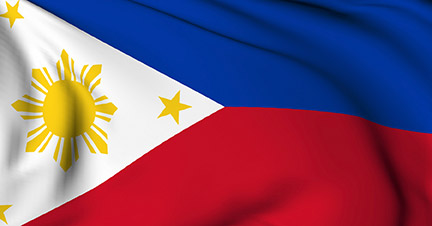Filipino Immigration to the United States | Filipino Immigration Lawyer | Filipino Visas
The first boom of Filipino immigrants to the United States began after the Philippines became a territory of the U.S. in 1898. Most of these first immigrants from the Philippines arrived as laborers, focusing their energy on agriculture and domestic service. Some even studied in U.S. schools. By the 1930s, the Filipino American population had reached 45,000, and it has continued to grow ever since. In fact, since 1970, the Filipino American population grew nearly seven-fold from 336,731 to 2,364,815, making up about one percent of the national population in the United States.
This growth of Filipino migration to the United States continued over the years, but certainly not without its fair share of difficulties. For example, the Tydings-McDuffy Act of 1935, which granted the Philippines independence, had the effect of limiting immigration from the Philippines. This Act reclassified Filipinos as aliens, thereby limiting their immigration to only 50 individuals per year.

Filipinos and World War II
When World War II commenced, thousands of foreign-born Filipinos were recruited to serve in the United States military, and the Navy in particular, where the were employed as stewards and cooks. The Philippines' close proximity to Japan and the Far East made the it an important tactical location for the United States. Filipinos who had served in World War II were given the option of becoming citizens of the U.S. following the war, and many took advantage of that opportunity. Additionally, Filipina war brides were allowed to immigrate to the United States due to War Brides Act.
Post 1965 Immigration Act
The last, and present, wave of immigration from the Philippines began in 1965, with the passing of the Immigration and Nationality Act of 1965 (INA). The INA had the effect of ending national quotas and provided an unlimited number of visas for family reunification. With the act, priority was given to families, allowing immigrants to sponsor family members under certain conditions. Priority was now given to family members of U.S. citizens and permanent residents so they could sponsor the following types of immigrants in the order of these preferences:
1. Unmarried children under 21 years of age of U.S. citizens
2. Spouses and unmarried children of permanent residents
3. Professionals, scientists, and artists "of exceptional ability"
4. Married children over 21 years of age and their spouses and children of U.S. citizens
5. Siblings and their spouses and children of U.S. citizens
6. Workers in occupations with labor shortages
7. Political refugees (Asian-Nation.org)
The Immigration and Nationality Act of 1965 (INA), combined with the repressive political regime of Philippine President Ferdinand Marcos, resulted in the escape of huge numbers of Filipinos in search of education and work. Unlike many of the earlier Filipino immigrants, who were farmers and and military personnel, the members of this new wave of Filipino immigrants were highly professional, many in the medical fields. Thus, within a few years, less than a tenth of the Filipino immigrants were laborers; two-thirds were professional and technical workers.
Filipinos in Modern-Day U.S.
In 1980, the Philippines replaced China and Japan as the Asian county that sends the largest number of immigrants into the U.S. Furthermore, by the 1990s, the Philippines sent more legal immigrants to the United States that any other country except Mexico. Among illegal immigrants to the United States at that time, the Philippines ranked 6th.
Presently, employment-based preference — mostly temporary, such as the Eb-1, Eb-2, Eb-3, Eb-4, and Eb-5 visas — are on the rise and have become the most relied upon method for Filipinos seeking to enter the U.S.A.
Despite huge waves of immigration to the U.S. and a steady increase in political and social influence, thousands of Filipinos have been faced with deportation in recent years. In light of the Absconder Apprehension Initiative, which was developed as part of the U.S. Department of Justice's anti-terrorist campaign, record numbers of Filipinos are now being deported. The Philippines are being singled out since the country is listed as an "al Qaeda active nation" due to the presence of Abu Sayyaf terrorists in Basilan Island, despite the fact that Basilan Island is only one of 7,100 islands in the Philippines. If you are a Filipino person and you believe that you are being unfairly deported, a U.S. immigration attorney can help you.
Contact Us
If you are a Filipino person seeking entry to the United States through one of the U.S. government's immigration services, please fill out the questionnaire below and an experienced immigration lawyer will contact you regarding your particular immigration matter. There is no obligation created by your submission of information. Immigration lawyers and law firms are available at all hours and will contact you to assist with any immigration concerns that you may have.